WHAT ANDREW DID NEXT
Words: Tim Baker.
Photos and video courtesy UrbnSurf
The man who brought us UrbnSurf, Andrew Ross, is now set to roll out new Wavegarden wave parks around the world

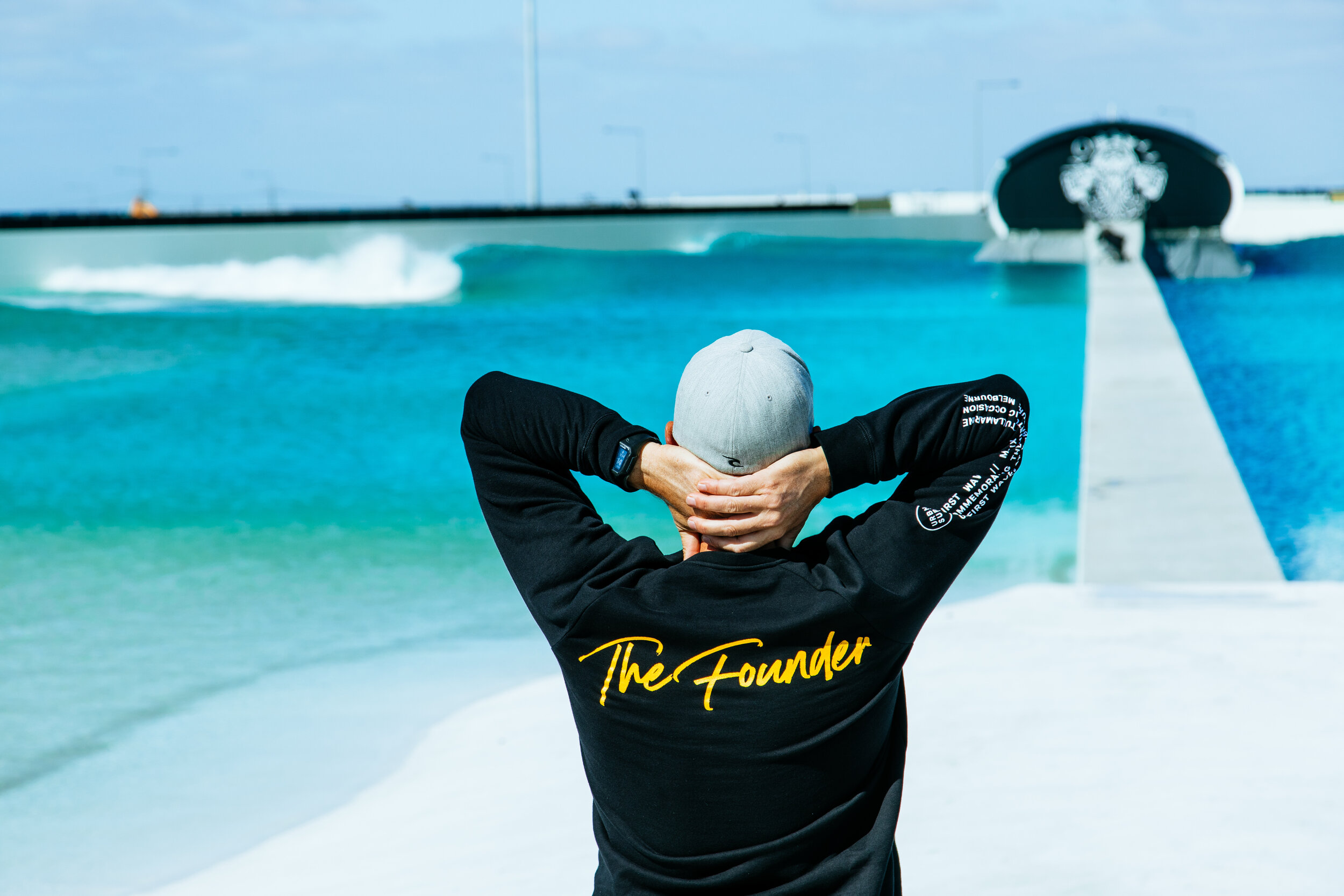
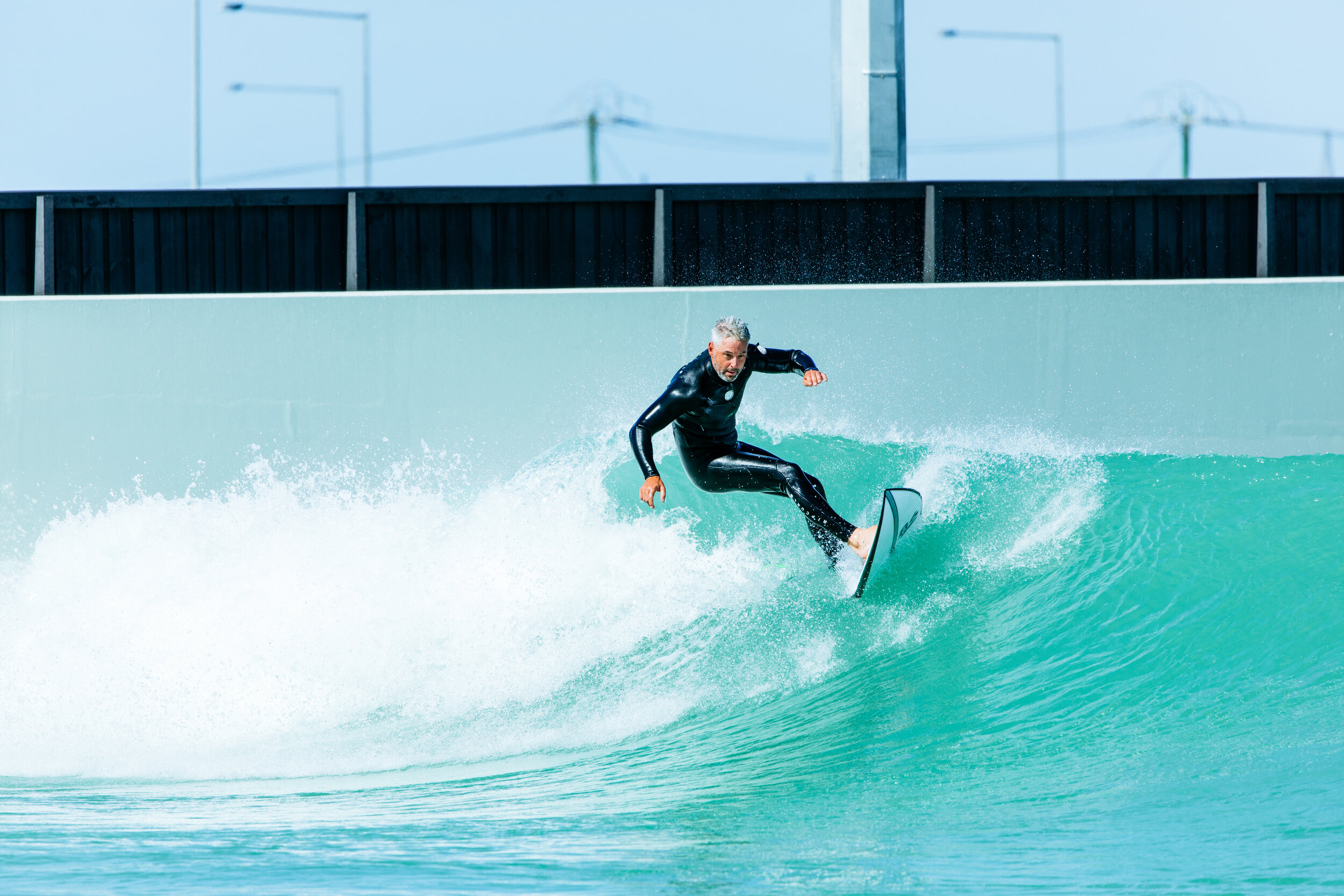
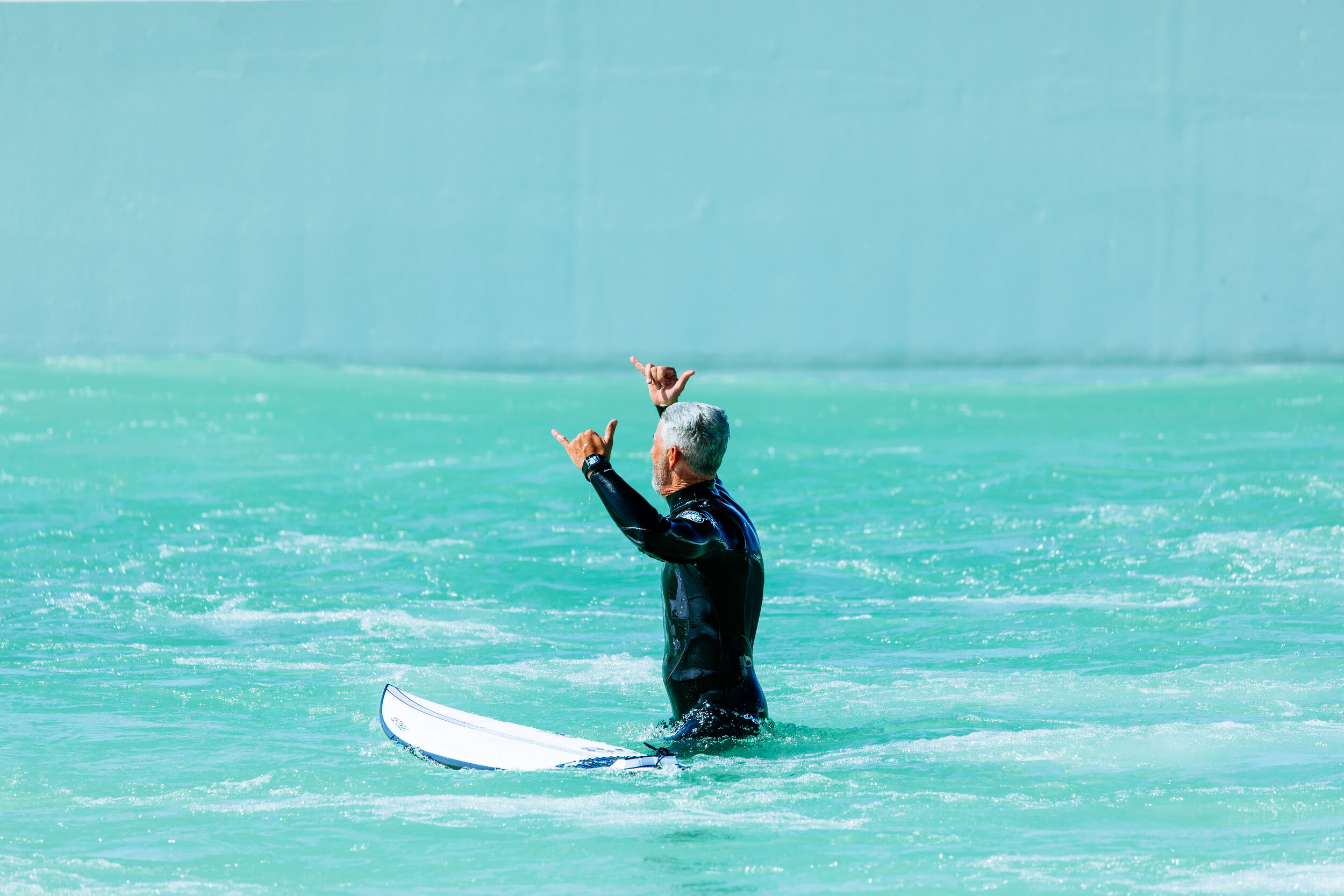
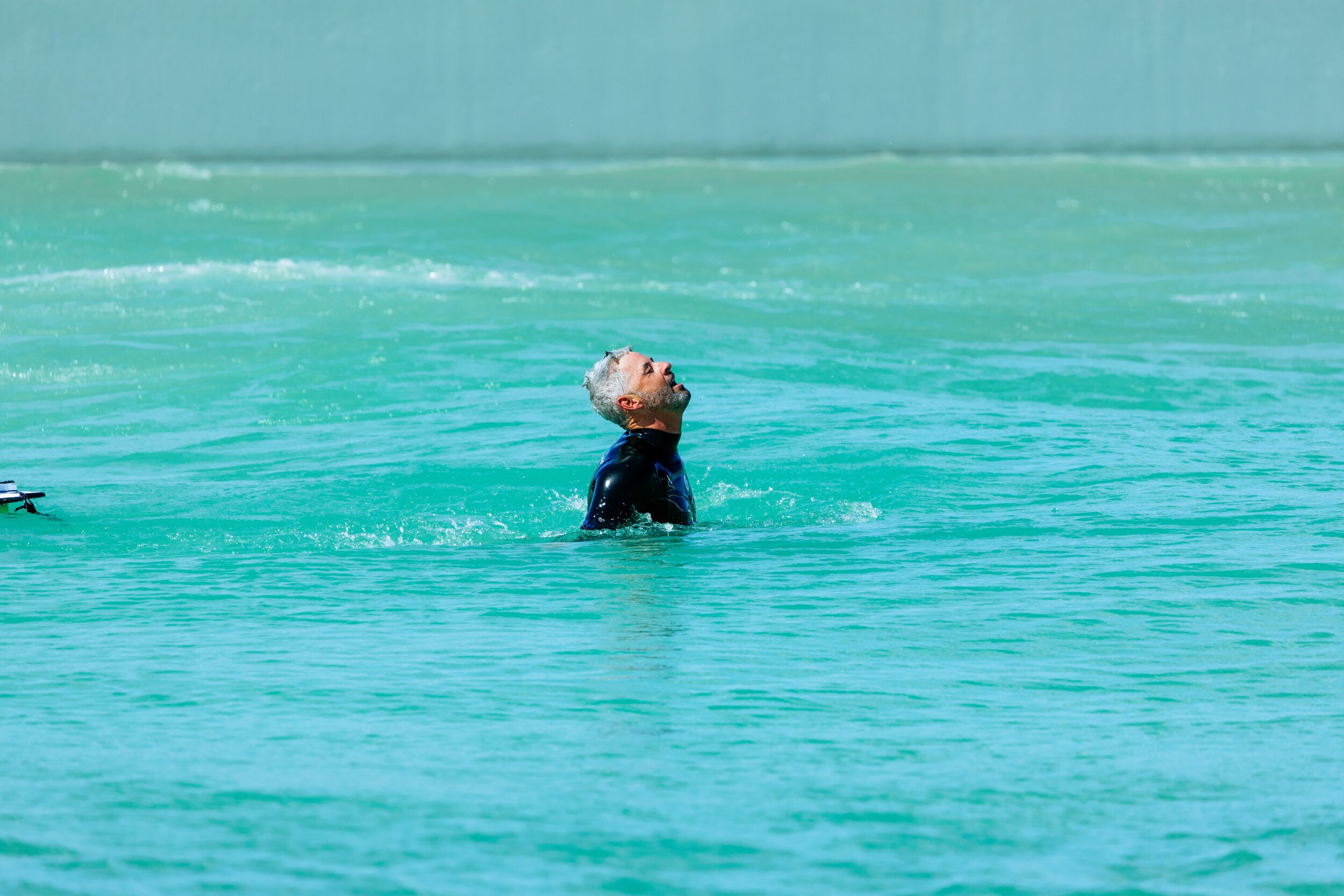


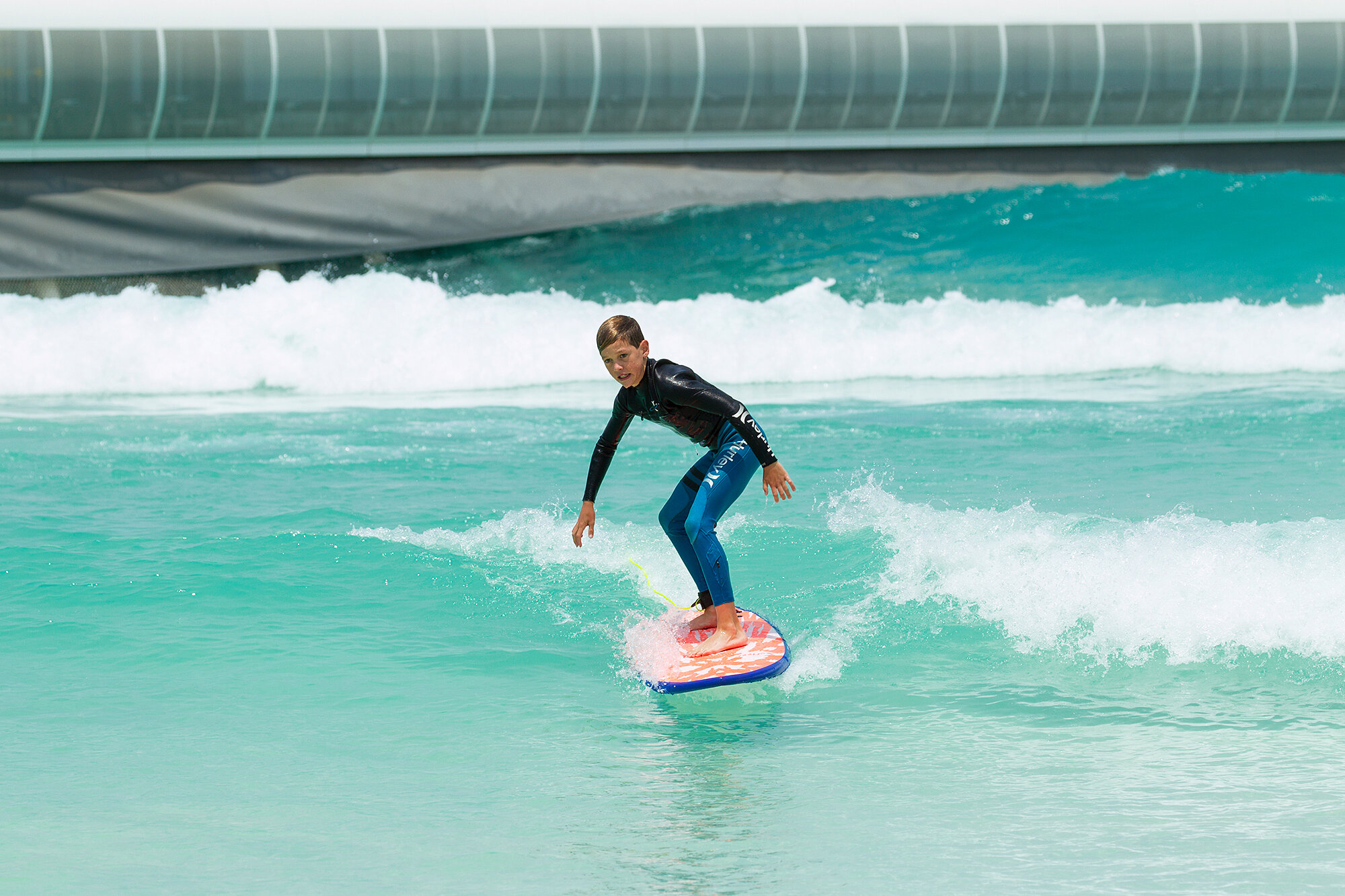
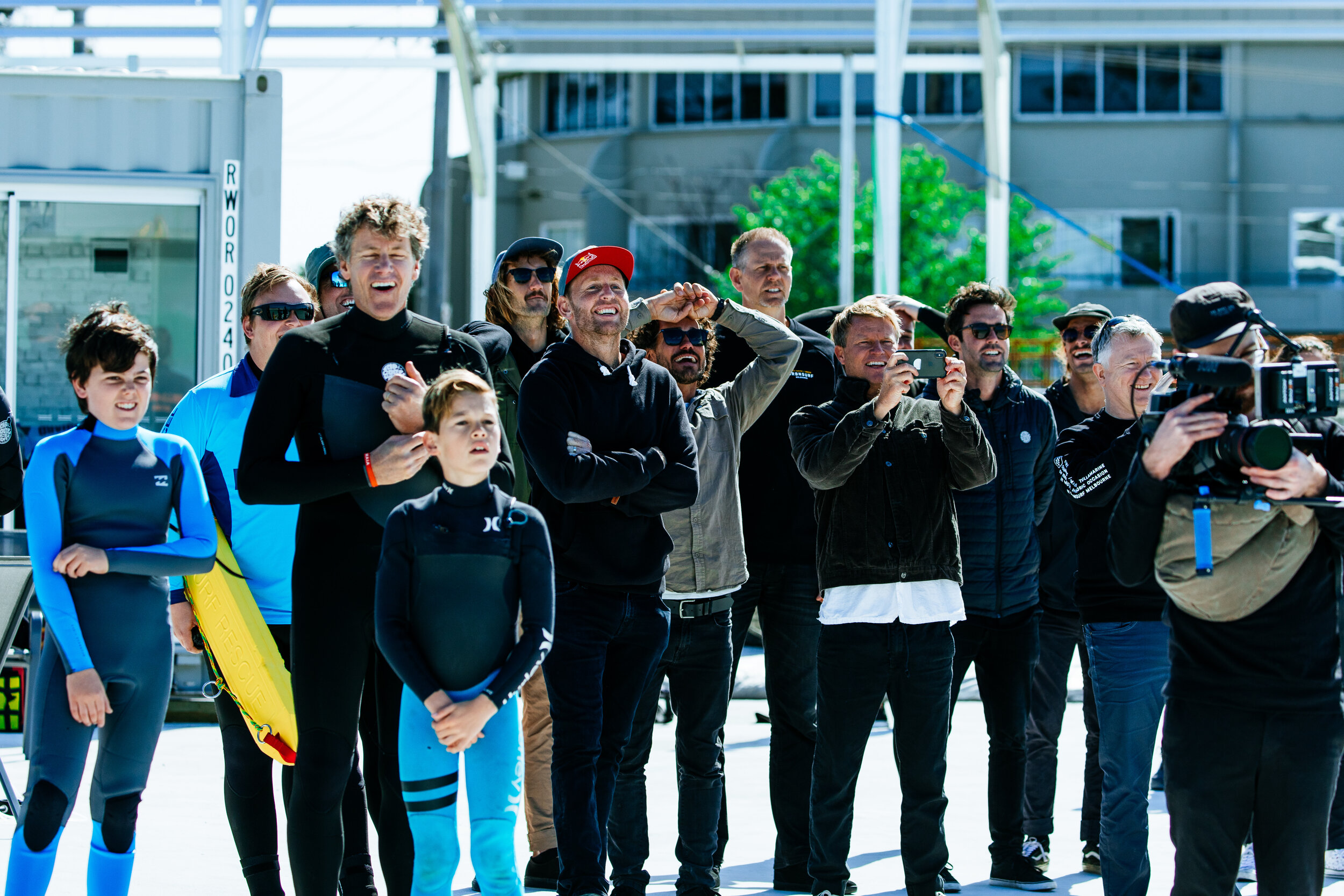
What do you do after spending close to a decade realising your most far-fetched ambitions, to launch a successful Wave Park? Sit back and enjoy the fruits of your labor, get barrelled off your dial, or embark on an even more ambitious mission to roll out wave parks around the world? For UrbnSurf Founder Andrew Ross the lure of a new challenge and more man-made barrels has proven irresistible. Since his very first wave in Wavegarden’s test facility in the Basque region of northern Spain in 2012, Andrew’s been a passionate advocate for the potential of wave parks to deliver amazing experiences for surfers and learners alike. Now, he’s moving on from UrbnSurf and taking up a new role with US-based wave park developer Aventuur with plans to launch a series of wave parks in key locations internationally. The Coastline’s Tim Baker sat down for a good, old-fashioned Zoom call with the busy entrepreneur to get his take on the future of wave parks, why UrbnSurf has proven such a success and how he got RSI from over-indulging in his creation.
Coastline: Wave parks have kind of been normalised now, but that wasn’t the case back in 2012. What gave you the confidence back then that this acceptance would come?
Andrew: It’s amazing to see the acceptance. We’ve now got technology that works, a proven business model and people that will pay, and we can deliver these amazing experiences to them. Back in 2012, I’d kind of had a passing interest in the surf park space for a long time.
Even though I’m a lawyer, I’d worked in the oil and gas industry so I’d been around a lot of engineers, and engineering concepts and principles really fascinated me. I’d always kept an eye out for things that had been successful in other parts of the world that could be introduced to Australia. And for me the tipping point was when I caught that first wave in the old lagoon in Spain. To this day I can remember the very first wave I ever stood up on at Lorne Point when I was a 7-year-old and I can remember with such clarity that very first wave in the lagoon. It was only mid-thigh high, a two foot wave, six or seven little turns, but I kicked out and went, holy shit, I could see the potential, because of my interest in engineering over a long period of time, it was just a question of scaling it up.
When you got on the wave it had power and it had a trough and you could do some wicked little turns and throw it around. It was in that moment I could conceive the opportunity, the technology could improve and scale up. And if I put my investment banking hat on, we had this established market in the world of surfers, who are passionate people for their sport but they are limited by the conditions and they can only engage in their sport when mother nature allows. So, if you can deliver to them an opportunity to surf more, which was the phrase we came up with for Urbnsurf, and it’s an authentic experience and you can price it at a reasonable price point then you have a business that is really remarkable.
And if you can be first to market you’ve almost got a monopoly where you’re selling something to people who are addicts really. It’s like a legalised form of drug dealing.
I had both my left and right side of my brains working on it. The right side of my brain, the creative side, surfing it and seeing where it could go, and then the left side, the more rational analytical side thinking, actually there’s a business model around this. When you get that intersection between your passion and your profession you discover purpose.
This journey for the last nine years has been an incredibly purposeful journey. I was a corporate lawyer and then I was an investment banker in London and then I came back to Oz and I ran an oil and gas company, so those professions – corporate law, investment banker and oil and gas CEO, they’re kind of life the evil trinity of jobs, so if I didn’t do something good with my life I was definitely going to hell. So that was the motivation to do something positive with what was left of my life.
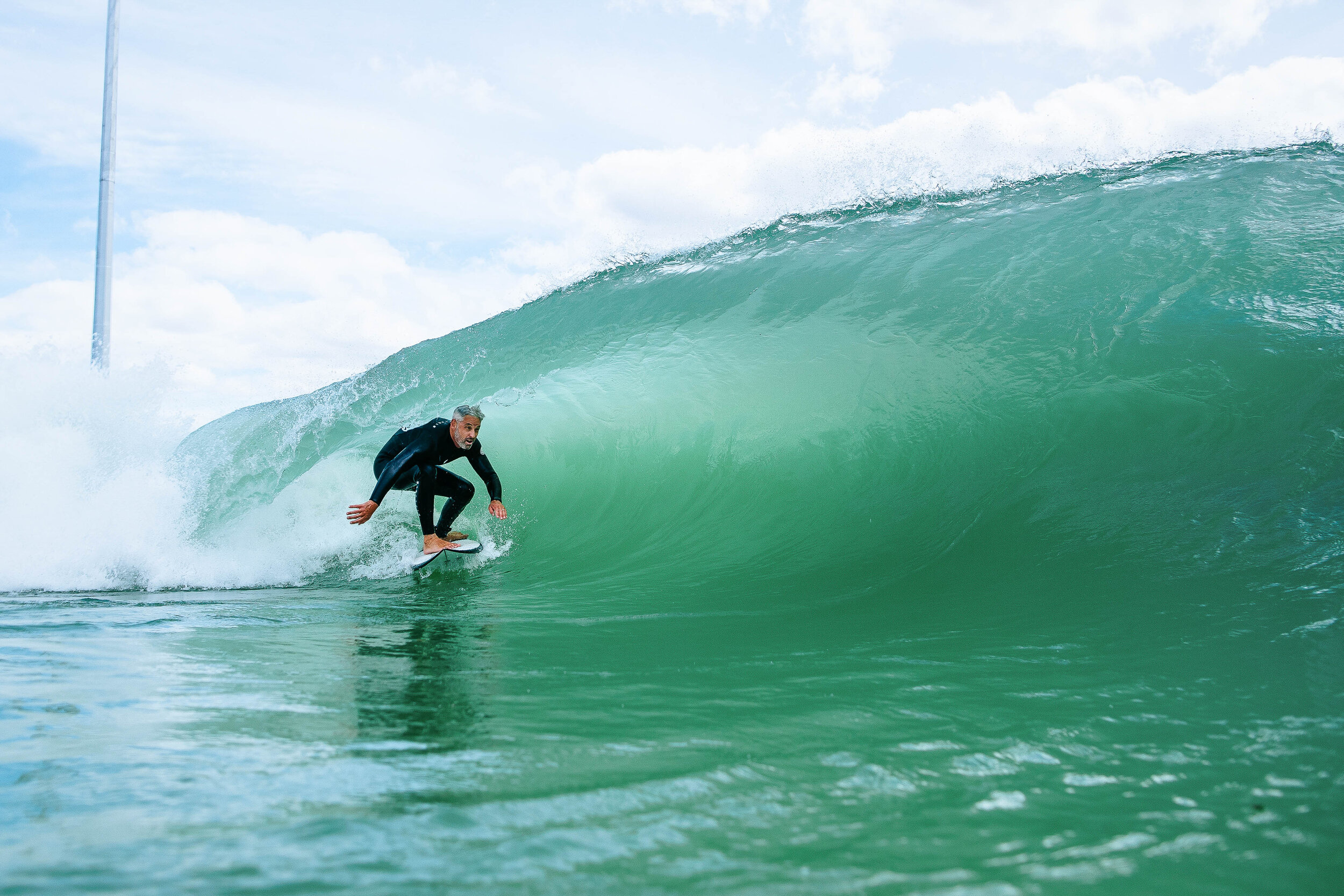
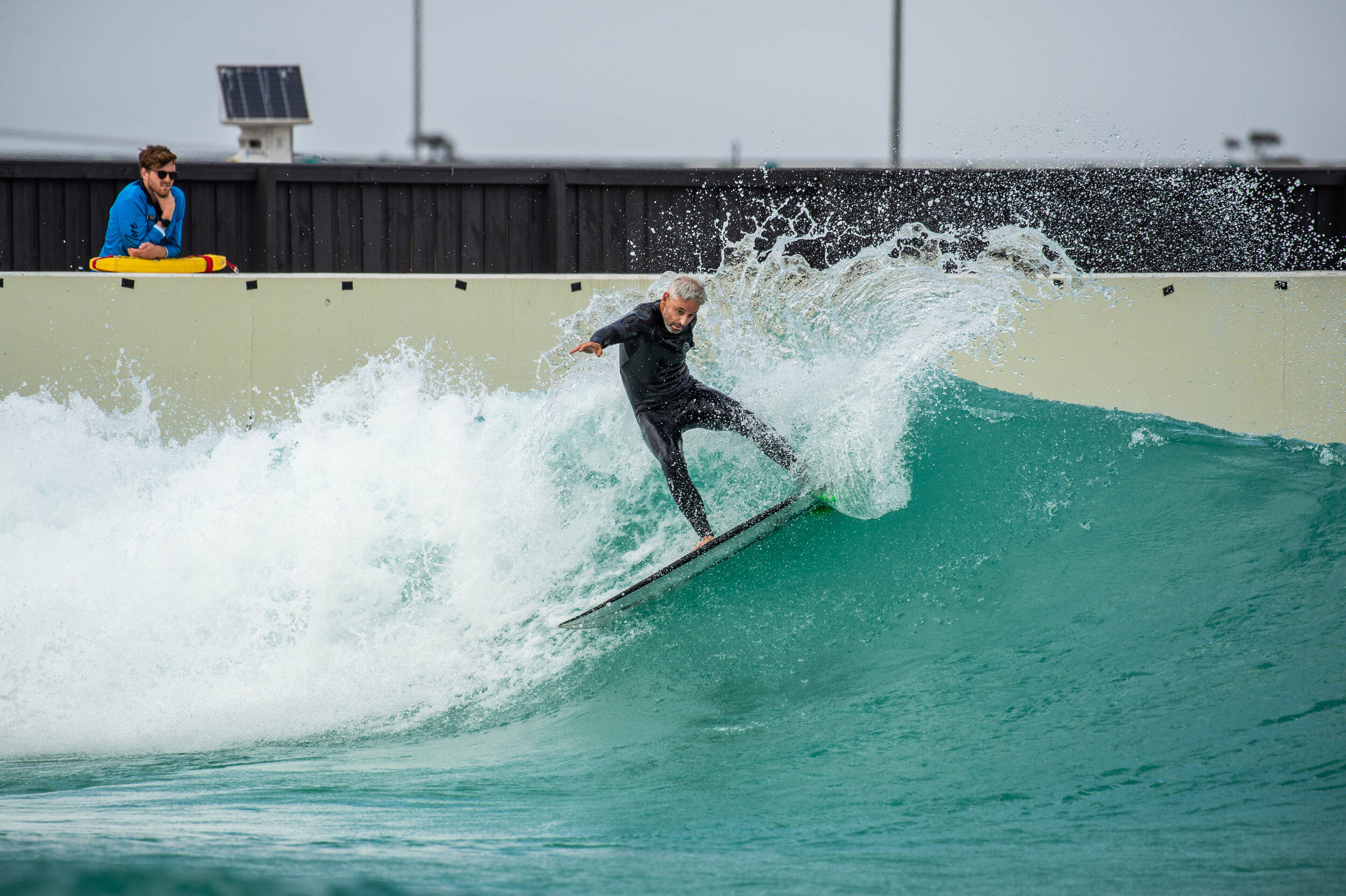
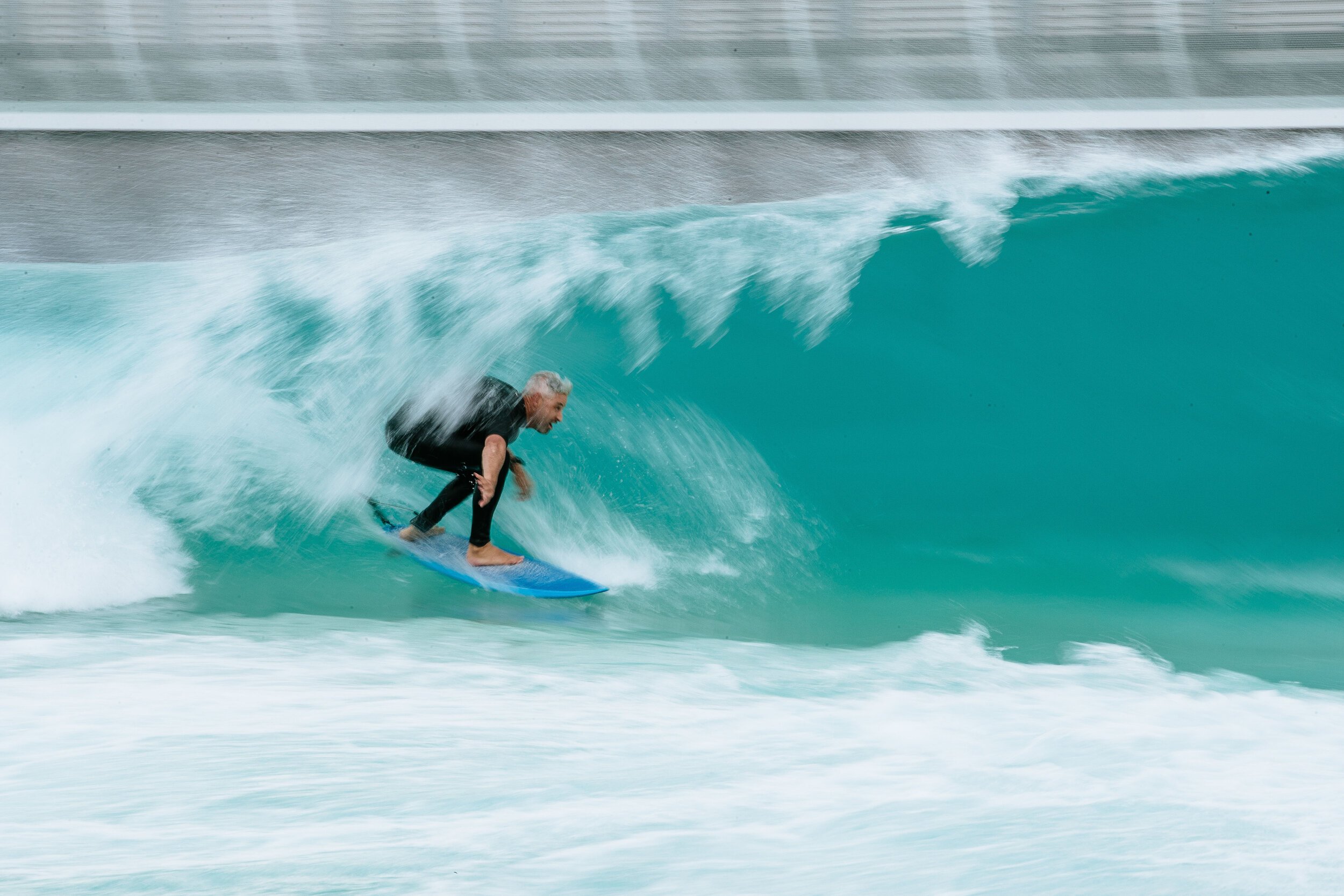

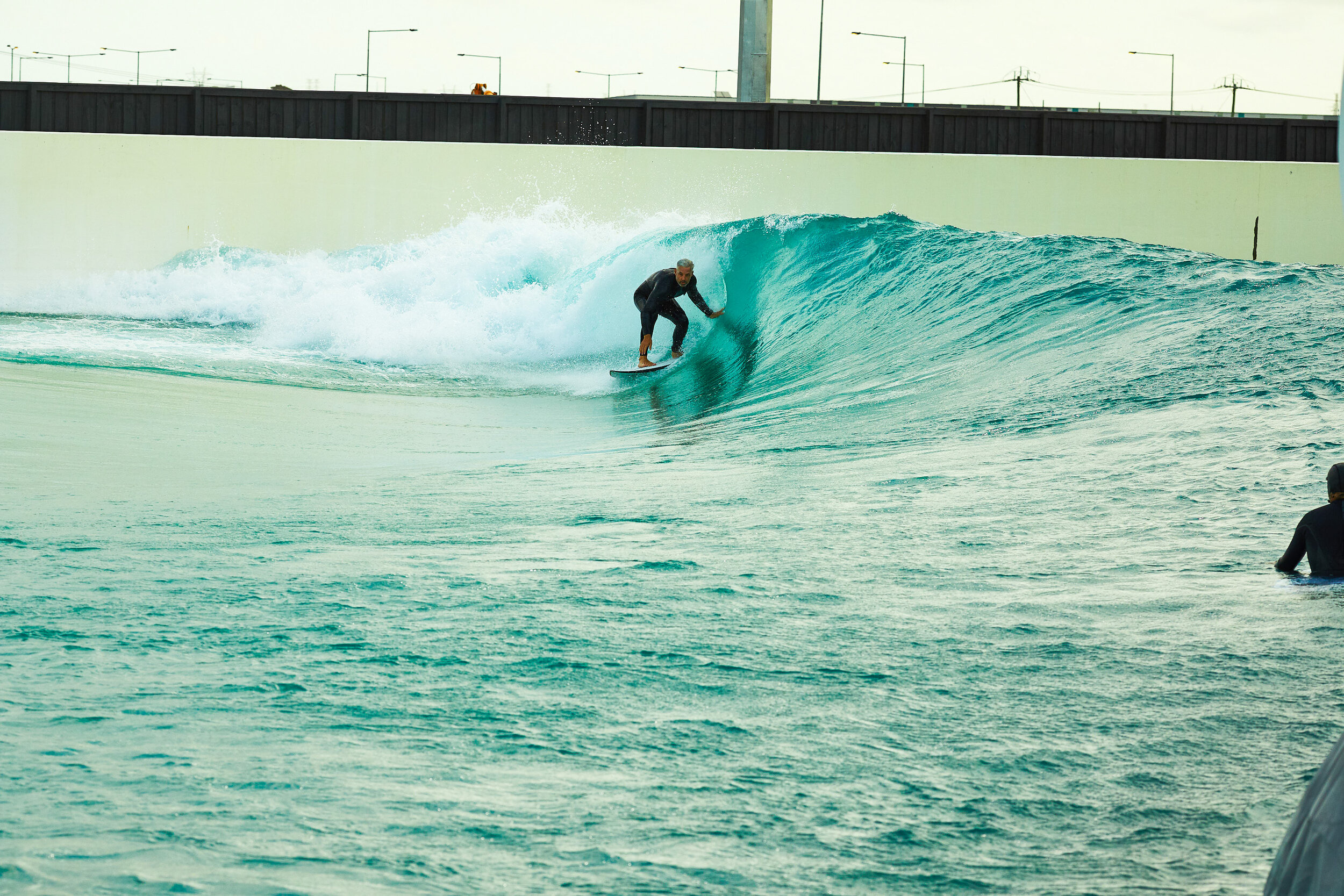
CL: It seems like the crew at Wavegarden have just been like quiet achievers, doing their thing, while other people were putting out artist’s impressions and CGI of their wave pools, they just went and built one. Is that part of what attracted you to them?
AR: It’s really been the fondest and best business relationship I’ve had in nearly 30 years of business now. It’s really quite remarkable. They are so humble and quietly spoken and so concerned to get it right and not to over-promise and to put it crassly, to not fuck up surfing. They and us have exactly the same perspective from that point of view. There’s a lot of people who come up with beautiful artist’s impressions, but there’s actually no science behind it, whereas Wavegarden have a team of 66 staff now. They’ve got three dozen engineers that work for them. That is two and half dozen more than any other surf park technology business in the world, so they have a very deep bench when it comes to that. And they’ve been in the surf park technology business, solely delivering surf parks, for 16 years now. They’re all core surfers and they’re all engineers.
We refer to each other as Nire anai euskaldunak, my Basque brothers. We go on holidays together. It’s beyond a business relationship, it’s like familial relationship. The Basque people are like that. I lived in London and we travelled all over Europe, my wife and I, and that was always our favourite place, San Sebastian, so to be doing business there is another element that seems kind of fated.
CL: You said you spent the best part of a year sitting in your office in Fremantle Gaol just thinking about all this. Can you describe that process? Was it quite systematic or were you just staring at the ceiling?
AR: There was a lot of staring at the ceiling in the gaol (laughs)! I had decided in early 2012 to take a bit of time out from corporate life. I had a young family, I’d just turned 40, I’d been travelling heaps for work … I was very fortunate to be able to say,’ I need a year off’ … As soon as I made that decision, I saw that article where Kelly and Greg were having a patent dispute about their circular wave pools designs.
That first year I signed up the rights to Wavegarden in Australia and I effectively took 2013 off, and travelled, did a bunch of amazing things. I ended up on Necker Island with Richard Branson for a week – a bunch of incredibly life-affirming, life-changing events. All of those things gave me the resolve to keep pursing this incredibly stupid and crazy idea to bring this random technology back to Oz that hadn’t been proven at scale, had no business model, had never been done anywhere in the world,
So, there was a lot of time spent going: How do we build this? What does it look like? How do you design it in such a way that it is appealing to core surfers, but not intimidating to non-surfers? What’s the business model around it and how do you price it and what are all the costs? Building up the business case for an industry from the bottom up.
Surfers to date have turned up at random beaches, done their thing, and left, a very transitory and nomadic way of experiencing surfing. Whereas we were creating almost a church to surfing, creating a built form to surfing that’s never been done before and there are analogies to that you can draw upon. I was really drawn to the Australian surf life-saving club thesis. This is a physical built form on a beach where you have different genders and massive age range of members all coming around a concept of service and having fun and getting pissed and it’s a very unique and central part of Australia’s cultural heritage. I thought, are there some learnings from that model that we can draw out that have relevance to these surf park things we’re going to do? And it just evolved over time.
I spent a lot of time in meetings trying to explain the concept of what a surf park was to investors and landowners, but it’s like that old phrase, don’t tell me, show me. And when the Surf Snowdonia park in Wales opened in August 2015, it was like a light went on in everyone’s minds, and everything started accelerating.
I bought theWavegarden rights in 2012, and we really didn’t get traction until about mid 2015, so that was a long period to keep pushing hard and keeping the flame alight. We signed up the deal for the Melbourne Airport site and had a big media splash with government guys on site, and then went to Spain to see the Wavegarden guys to celebrate and start planning it. I remember Josema the CEO, who invented all the tech, on the first day he said, ‘Andrew, we have something to show you, come over here,’ and they showed me the initial designs for the Cove system, this new piston-based system. They’d built this rickety single piston in the back lot of their R and D centre.
They took the rest of the day to explain to me what their road map for the technology development was and I went away from that day just thinking, shit, we’re going to have to change everything, because it was just so much more advanced. That meant re-cutting the whole deal with the airport, re-doing all the planning, all the design, from scratch basically. That added at least a year to the process and obviously I had to go through the cap raising process, which was the most difficult cap raising I’d done throughout my career. I’d raised money for a lot of different things, and this was the hardest by far.
But we got there in the end and we built it and we’ve opened it and I’m incredibly proud of what we’ve achieved.


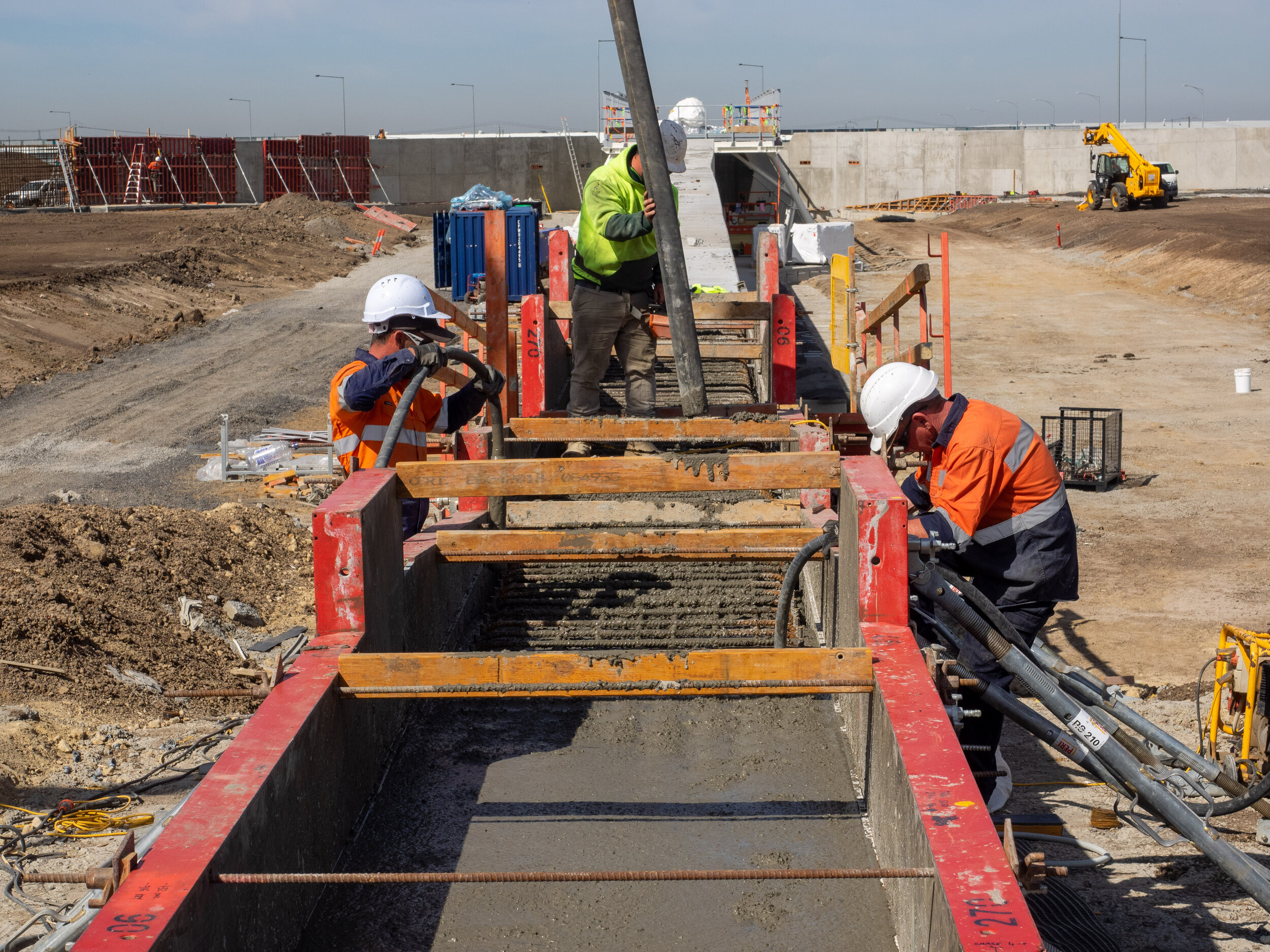
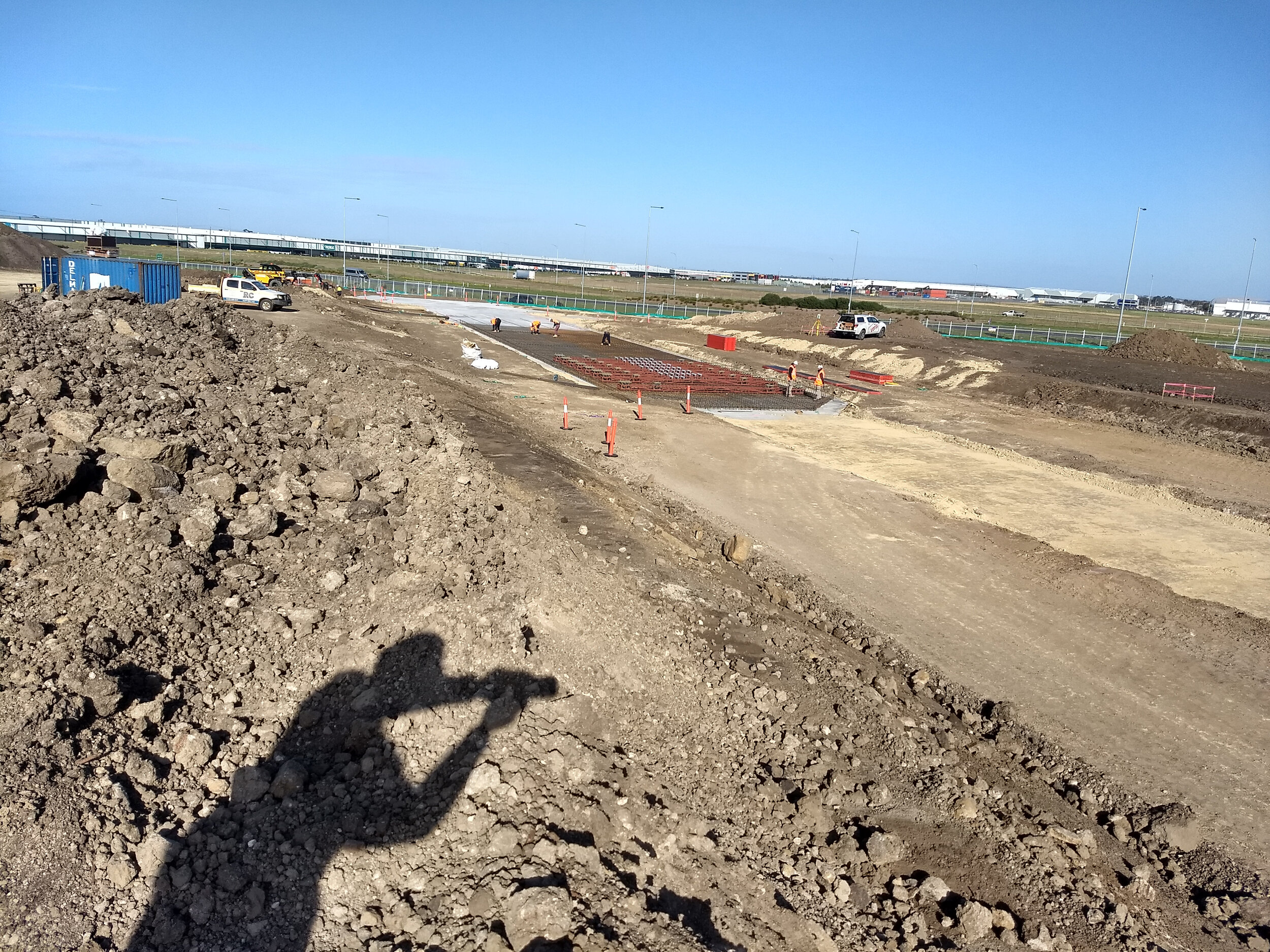
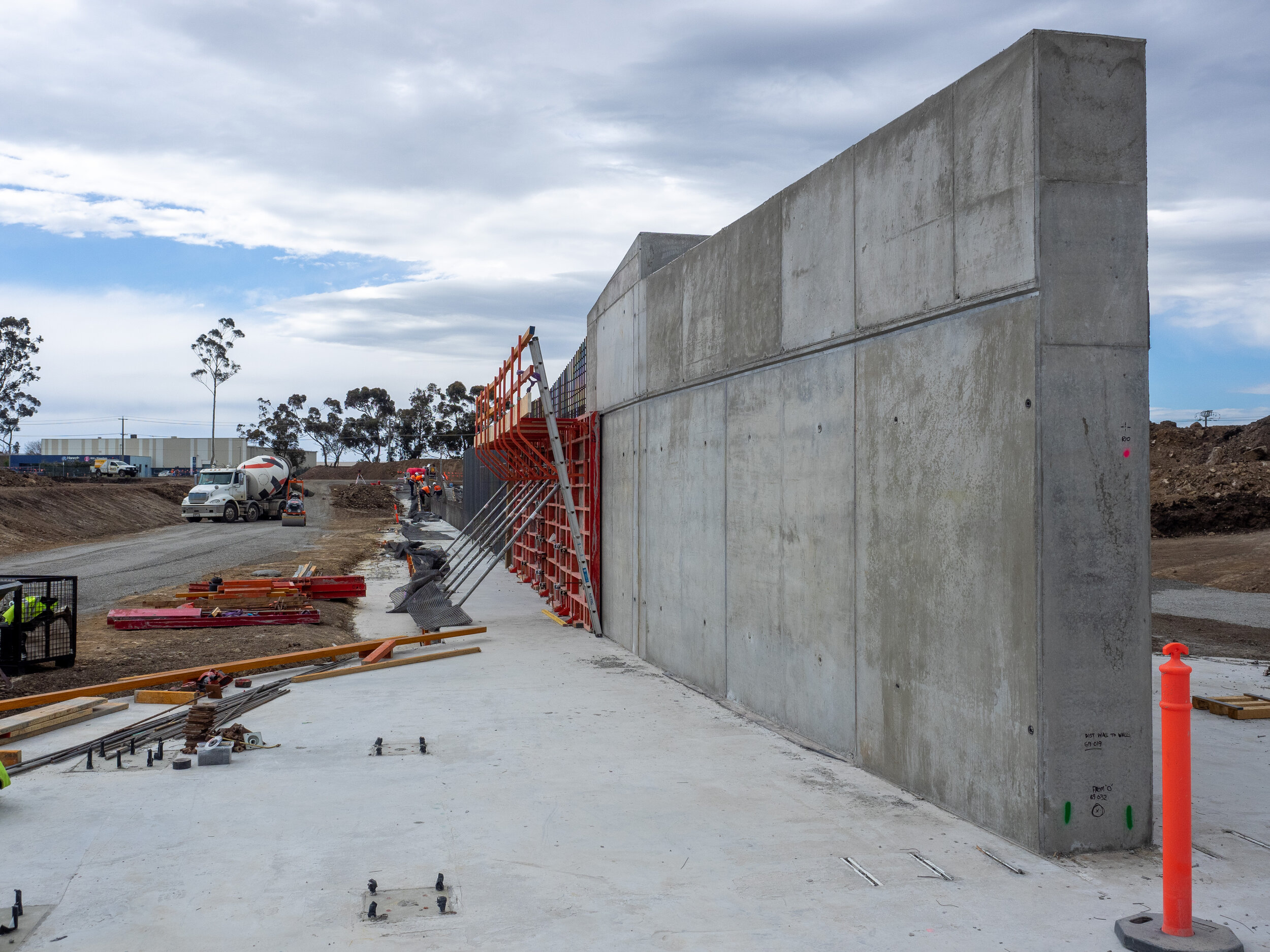
CL: Can you say what sort of investors you’ve attracted? Are they mainly small investors who surf, for whom it’s a bit of a passion project, or more large venture capitalists?
AR: It’s a bit of a mix to be honest. There are a lot of scungie Perth mates of mine who tipped in five or 10 or 20 grand back in the day early on, and a lot of more sophisticated investors, venture capital, private equity, high net worth guys in there as well, and not all of them surf. So there were some challenges there. The business has performed very, very well, even in spite of COVID. I think the investors have been impressed by the community response in Melbourne.
CL: The Melbourne Airport site seems to work particularly well. Was that a bit of a master stroke on your part or more good luck that it became available?
AR: We were scattering ourselves as far and fast as we could. We were having conversations in all the major markets. It wasn’t amazing strategic planning on my part. We were lucky the airport saw the opportunity and were able to capture the vision. They had a site available.
Everyone loves to use airports but hates living near them so if the airport could be seen to be doing something positive, which is what the airport did with the Essendon footy club, relocating them, then that is a good result. We were just really lucky that some forward-thinking people at the airport took the risk on us as well. It’s really remarkable as well, if you look at some of the traffic flows coming out of the park, we’ve basically reversed the traffic on the Princes Freeway. There’s so many people travelling from Torquay and Bells up to the Park, that’s a massive endorsement.
CL: I’ve been impressed by the way the Victorian surfing community have embraced it and integrated it into their surfing lives.
AR: Robbo, Adam Robertson, he’s a good mate now but he was highly sceptical initially. We had him on site for the first sod turning in 2018 and he was asked by the press, what do you think of these surf parks? And he’s the most hard-core surfer in Victoria, and he was going, ‘Ah, urm, yeah, I think they’re going to be good,’ but he is the biggest advocate for it now. He and his son Teddy, they’ve been coming a lot and Teddy’s seven and he’s just surfing like a weapon in the pool.
CL: What were some of the highs and lows of bringing this thing to fruition, because it sounds like you faced a lot of setbacks?
AR: It was incredible. It was such a labor of love for all of us in the development team. I’ve never worked as hard in my life. I often reflect back and think, I wonder if that’s the price you have to pay to harness mother nature, to harness waves, that there’s this price that is owed to be able to deliver that joyous experience en masse, that someone has to pay the price, that it’s this yin yang thing. We had everything thrown at us. It was so difficult to build that thing, and we often thought we were doing something against the wishes of God or Huey or whatever.
Ultimately, some of the low points were just trying to get the lagoon floor finished and it was the wettest winter on record in Melbourne and we needed dry weather. And then we were looking to open and there were the bush fires that put a whole lot of soot up into the clouds, and then we had mud-like rain polluting the pool.
When we were doing the commissioning of the pool, we had the Wavegarden technicians on site and Josema calling in from Spain – he was flying down in a couple of days. You don’t want to put the system under any stress while you make sure all the pistons are aligned. It’s a mechanical system so you’ve just got to make sure everything is tuned properly. I remember they turned it on, and we just started seeing these little ripples, and then they put a little more power into it and there were these slightly larger waves and all of us were losing our fucking minds. I get emotional just talking about it, it was pretty amazing.
I remember me and Rupe (UrbnSurf marketing manager Rupert Partridge) we were specifically told by the board not to enter the pool. I think it was because we were waiting for insurances to get approved, there was some reason, and I just went, fuck it, and jumped in the pool in the nude and started body surfing.
CL: How much fun was that tuning process? Rupert was telling me you were surfing and giving feedback and they were adjusting the settings, getting everything super fine tuned.
AR: It was so much fun. We started pushing through those first very, very small waves, and then I arranged with the Wavegarden guys that for two days they would crank it up a bit, which was beyond their commissioning schedule. That was just recognition of the special relationship we had, and so I was able to just very secretly get all of my mates, all of the close people together to surf it for the first time. Mark Mathews had been down the day before just to have a look at the site. He called me up on the way to the airport and said, ‘Thanks so much for showing me round, it’s amazing.’ I said, ‘Actually, we’ve just got the okay to turn the waves on tomorrow for the very first time. Would you be keen?’ And he literally put the hand break on, on the way to the airport and did U-ee, cancelled his flight, booked into the hotel next to the park and was frothing out of his mind. I’ve still got the text where he said to me, ‘I can’t remember being so excited before a surf ever.’
I got to surf the very first wave in the Lagoon, and just had an incredible experience over two days, and then through the commissioning process proper we were cranking up the wave generator to produce 1000 waves per hour, which we then ran constantly for 24 hours straight … You’d surf 50 waves in an hour and be absolutely spent, that process was amazing. Finishing the commissioning, the hand over process, and getting it tuned up pre-the opening; some other team members and I just had this joyous period of surfing the lagoon by ourselves and sharing the experience with a bunch of crew.
I had in the order of 3500 waves in that four-month period, and if I calculate that against how many waves I normally ride in a session and how often I surf a year I think I had 12 years of surfing in that four-month period.
It was just remarkable. I’m still suffering from that. I’ve still got golfer’s elbow even a year on from all the paddling that I did and pushing up from the board. I’ve burnt out my elbow. I haven’t heard of anyone else who’s had RSI from surfing.
CL: That’s an injury you’ll get no sympathy for!
AR: No sympathy at all! It was just incredibly satisfying given the journey I’d been on to that point. To put it into context, I was flying from Perth on a weekly basis, working 18 hours on site for five days, then flying home for the weekend. I flew 275,000 km in a year. I’d get home Friday night cooked. We put so much pressure on ourselves personally and also on our relationships with our wives and our kids, and so it was very satisfying to finally get the park finished and be able to deliver what we’d always dreamed of.
Andrew with wife Sam, son Lachie and daugther Chloe on the first day of surfing at UrbnSurf
CL: What was it like when you finally opened the doors to the public? Was there a moment when you just sat back and went, wow, we’ve done it?
AR: Wow, there was a whole series of moments. People didn’t know who I was so I was just standing at the gates like a staff member, having this wonderful moment … just seeing people’s faces just come alive and the waves coming through. Forming these beautiful relationships, having these shared experiences … You have this man-made environment where you eliminate the element of scarcity, therefore you don’t need to have competition, therefore you don’t need to have that very dominant masculine stuff that’s in the lineup, the localism. There was some guy who popped up and went, that was the funnest surf I’ve had since the 70s.
I think the media day we had on site was one of the most epic days as well, the place was just fucking cooking. We had this soft nor-easter, it was about 35 degrees and everyone was going mental – it was so good. I did 11 hours of surfing straight, only getting out of the water twice to have a wee. I was literally cooked, but I had so many barrels and so many good waves, that was fun!
CL: How tough was it then, after everything you’d bene through to get it open, to have to close when COVID hit?
AR: It was so tough, because the park had been so successful. At that point it was taking people about six weeks to be able to book a session. We were open 16 hours a day, seven days a week, and the wait was literally six weeks to get a slot in the Advanced wave. The operational team were getting absolutely hammered, it was really trial by fire,
Having COVID shut the park down helped keep the team together in some ways. UrbnSurf are hopeful that it won’t have to close down again. It’s been interesting to see how the business has come back with a roar after re-opening. It’s very much out-performed expectations over summer. The ops team have done an amazing job, keeping the level of service up and all the imaginative ways they’re engaging with community.
CL: I was struck by how friendly the vibe is in the water with everyone taking it in turns. It was really refreshing.
AR: One of the questions we had was, are we going to have marshals or guards regulating the lineup? How’s that all going to work? And I trusted in the fact that because people needn’t worry, you don’t have to hassle, and you can really only get one board into that take off spot at once, that will self-regulate and we’ll go with that and so we won’t set any hard and fast rules. And to be honest everyone’s played really fair and that’s worked really well.
That customer experience from the first digital engagement to the physical engagement, then the post-site visit afterwards, there’s been a lot of thought through that process. We did a lot of work with the architects asking, if I’m the surfer turning up to surf this, how do we design this so it’s the least possible amount of time, the least friction points to get from my car into the lineup catching waves? And you just map through that customer journey. And if I’m a beginner and I’m feeling a bit nervous, how do I get handheld through that process so I don’t feel anxious and I want to do it again?
We’ve very purposefully mapped out a lot of those journeys from an architectural and systems point of view just to make sure that it is the best experience possible for the different kinds of customers that come through.
CL: What moved you to leave UrbnSurf and take on this new opportunity with Aventuur and was it hard to leave your “baby” behind?
AR: My career has gone in these five-year chunks, and I was into my eighth year with UrbnSurf and I’m more of an entrepreneurial start-up guy than I am the guy that runs large businesses with hundreds of people. That’s not really my jam. And because I’d cooked myself delivering Melbourne, I spoke to the board about stepping out of that CEO role and taking more of a founding father role, winding it back a bit, which was cool and the team that formed around me enabled that to happen which was great. I remain a significant shareholder in the venture but I wound back the day-to-day involvement a bit.
There are a whole lot of teams around the world trying to get surf parks up and so after the Melbourne launch they all contacted me and said, ‘Can you help? Can you give me some advice?’ So, I was doing that, and I was approached by a group in the US who had been very quietly assembling a team, and assembling exclusivities for the Wavegarden technology, and they were introduced to me by the Wavegarden team and a couple of other contacts I had. And they pitched the idea of me coming to work for them and taking everything I’d learnt in the context of the Australian space but apply it in a world context, and that started to appeal to me.
Obviously, the UrbnSurf guys were disappointed and wanted me to remain as a non-exec director on the board, but I could see the potential for conflicts arising so ultimately decided not to do that and step off the board. I started working with the Aventuur guys last year and I’ve been working with them for nine months now and everything’s going really well.
Tullamarine’s UrbnSurf floodlit under a night sky just before opening
CL: How do you see the future of wave parks? There would appear to be big plans for multiple projects around the world using various technologies. Are they going to continue to grow in number?
AR: It’s amazing to have been at the birth of this industry and see where we are now and realise we are at such an inflection point. There are people who wouldn’t even give me a meeting five years ago and are now scrambling to try and get a part of this, and it creates a whole new range of problems and opportunities and risks to evaluate.
I think there are going to be a whole lot of wave parks that are going to be built with a kind of Top Golf, theme parkie approach and I think they’ll do okay, but they won’t be able to reach scale because the only way you can scale this business is to be authentic. You need to have an authentic surfing experience, and authentic surfers who are businesspeople running these businesses who get it.
If you are not true to the core, you’re not going to survive, because this is a religion. We are creating churches to surfing.
CL: You mentioned Aventuur has exclusive rights to the Wavegarden technology in several key territories around the world? Can you say where?
AR: We’re now the largest Wavegarden partner in the world. We have a number of Wavegarden exclusivities in a number of countries around the world. We’ve announced Singapore, NZ and Fiji but we have others that we haven’t announced yet, so there are a lot of very, very interesting things we are doing. It’s looking really good. We’re really close to taking down a few new sites which we hope to announce really soon
CL: You’ve had great success at Tullamarine. Can that model be rolled out elsewhere or do you have to take in a lot of local factors around the type of surfing community and cultural issues?
AR: For Melbourne, it was about getting it built – build it and see if they come. So, we were very focussed on having something that was proof of concept for the business model.
There are probably three legitimate models, if you’re talking about parks that are open to the public. Private parks are a further alternative being contemplated now, that are solely private membership-based parks. But if you are talking the public model, the turnstile type model, which is the UrbnSurf model like Melbourne, they’re built in urban locations, land is more expensive so you can’t be too expensive, in terms of your real estate play.
You’re second model is a suburban model, so its potentially a little further out but it’s got a residential component around it as well, not really a golf course estate but that kind of an idea. And that allows you to support the business maybe with a lower through-put through the lagoon, but because you’re exposed to some development margin on the land around it, it gives you a good return outcome.
And then the third model is the destination model and that’s going to places around the world that are renowned as tourism destinations that would accommodate a lagoon and you’re very much servicing the needs of the tourists. And that’s what Singapore is to us, it’s one of the leading tourism destinations in Asia, very much a destination that has looked at passive tourism experiences in the past and we understand the government’s very keen to incorporate more active leisure and entertainment offerings so that is a very interesting market.
And Fiji’s the same. Obviously, with COVID and the cyclones they’ve had recently that’s a country that’s hurting pretty bad at the moment but in the fullness of time I’m sure it will recover and bounce back. I can see there’s the potential for a surf park in Fiji that then complements Tavarua and everything else Fiji has to offer.
The other thing I’ve been thinking about recently is that the industry has been moving through a phase of – there’s different people coming into the market with different technologies. This is this space race thing people keep talking about. We’ve done all of the work over a number of years now and we keep testing and checking the different technologies. We’re very confident in Wavegarden, and that little game will play itself out in due course, but it’s good click bait fodder for the time being.
The third stage of evolution of this industry, and the more mature stage I think, is around the experience, and who provides the most complete and authentic experience end to end, matched to the right technology. With that experience and technology in the right sites and the right market and you’ve done the right deals on the right sites to acquire them, with the right team.
Wave Garden’s new Wave Park in South Korea is possibly the most advanced wave park in the world today
What do you think of the potential for accelerated development, in terms of people learning to surf or improving very rapidly with the opportunities wave parks offer?
Everyone thinks about that question at that elite level and I’m certain there’s a role for that, like having the Australian Olympic team in the Melbourne park, and people are getting a lot out of that. But I think it’s actually this upper intermediate market which is where you’ll see the massive leaps in progression. I often say to people, I’m surfing better at 50 than I was at 40, maybe even in my 30s. That was because I’ve had so many waves in the lagoon, and because I’ve also had Robbo yelling at me from the wall, ‘Andy, Andy, work on your bottom turn’! I’m sitting in the lineup with Parko and Taj and Sally Fitz, and so the next wave I paddle in to I’ve got all of them watching me, seeing how my bottom turn goes!
Progression is really interesting. There’s absolutely a huge case for upper intermediate and intermediate progression and beginners. There’s a program planned in Melbourne from the bays to the peak, a 10-week program taking you from an absolute beginner up into the big wave out the back, and just progressing you through that in a systematic way over a 10-week period. You just wouldn’t be able to do that in the ocean, it’s just not possible.
CL: Can you imagine there ever being an elite pro surfer who has grown up surfing in a wave park, like Rick Kane in the movie North Shore?
AR: To compete at the highest levels in the ocean you still have to have a lot of time in the ocean. I don’t think you can be an expert in the pool and then think you’re going to go out and dominate at Pipe. The interesting one to me is competition. I have to say, I don’t think the technology can yet match the skills the highest-level competitors have got. It doesn’t provide the ideal canvas for them to demonstrate exactly what they can do, but that’s evolving.
CL: What sort of lifespan do you think this generation of technology will have before it is superseded by the next upgrade?
AR: That’s something I think about a lot – What point are we on with that technology curve? Like with computers, you have that doubling of performance every few years. I don’t think it is (increasing that fast) in surf parks because we are governed by physics. If you want to push out a certain wave it has a weight and volume of water and requires a certain amount of energy to lift up. I think the advances in tech are going to be made in improving the efficiencies to lift that water with less power. I think you can get slightly bigger waves, but to take a metre-high wave to two metres it’s not just adding a metre of water on top, it requires an exponential increase in water volume and thus power. To take a wave from two metres to 2.5 metres actually requires double the amount of power given the increase in total water volume.
There’s going to be some advances there with wave height, particularly if power gets a bit cheaper. The Cove you can make the ride length as long as you want, if you have enough land and enough money. If there’s a park that’s built that’s a bit bigger or a bit longer or has a better barrel section, you’re still going to surf your local park, just as you still surf your local break even though there’s better waves up and down the coast.
The true sign of success with what we’re doing in Melbourne and what we’re doing with other parks is when people start having a sense that this is their local break. For me that shows that you’ve really accomplished what you set out to achieve. There was some comment on UrbnSurf Boardriders, ‘Fuck off, you ocean guys from our break, fuck off back to the ocean. You fucking coasties, bugger off.’ The person was being funny of course, but it just shows that people are really valuing their surf parks.
CL: Do you think surf parks will change surfing and the surf industry in any significant way?
AR: It provides a bit of a lifeline to the surf apparel businesses because we’re producing more and more surfers. I think all of that bodes well. We believe the world would be a better place if everyone was a surfer, or thought like a surfer or acted like a surfer. If only everyone could share in that sense of stoke; and stoke is such a unique concept to surfing. It is that direct mainlining into a flow state, and if people could feel more of that in their lives the world would be a better place.






